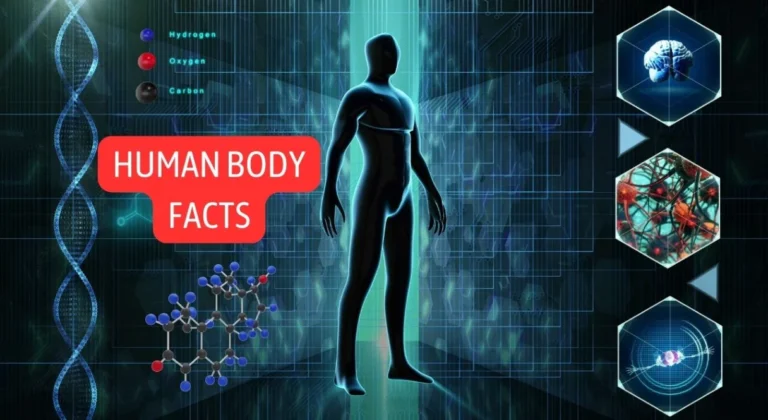The pictures we use in our articles might not show exactly what the words say. We choose these pictures to make you interested in reading more. The pictures work together with the words but don’t take their place. The words still tell you the important facts.
The fibula, also known as the calf bone, might not receive as much attention as its larger counterpart, the tibia, but it plays a crucial role in providing stability and support to the leg. In this article, we will delve into the intriguing world of the fibula and uncover 12 mind-blowing facts about this remarkable bone. From its unique shape and function to its role in injury and recovery, you will gain a deeper understanding of the fibula and its importance in the human anatomy.
The Fibula: A Vital Component of the Lower Leg
The fibula, along with the tibia, makes up the bones of the lower leg, running parallel to the tibia on the outside of the leg. Despite its slender appearance in comparison to the tibia, the fibula is crucial in providing stability and support to the leg. It serves as an attachment site for various muscles, including the calf muscles, which are essential for movements such as walking, running, and jumping. The fibula's primary function is to provide support and stability, acting as a brace for the tibia to distribute weight evenly.
The Key Functions of the Fibula
The fibula plays a multitude of roles in the human anatomy, contributing significantly to our mobility and stability. It supports muscles in the lower leg, provides a stable base for muscle attachment, enhances the efficiency of leg movements, and aids in ankle stability by forming the outer part of the ankle joint. Additionally, the fibula is involved in the formation of the knee joint and plays a role in enabling ankle mobility.
The Versatility of the Fibula
One of the most fascinating aspects of the fibula is its versatility in medical procedures. The bone can be used for bone grafts, as its long shape makes it suitable for repairing or replacing damaged bone in various parts of the body. Furthermore, medical professionals and anatomists often use the fibula as a landmark in anatomy to locate and identify other structures in the lower leg and foot.
Fractures and Regeneration of the Fibula
Like any other bone, the fibula is susceptible to fractures, which can occur due to trauma or excessive forces applied to the bone. Proper medical treatment is essential for successful recovery. However, the fibula has the remarkable ability to regenerate, making it a potential candidate for bone repair and regeneration techniques, such as bone grafting and tissue engineering.
Celebrating the Remarkable Fibula
The fibula, though often overshadowed by the tibia, is a bone worth celebrating for its essential role in the human anatomy. From providing support and stability to facilitating muscle attachment, the fibula is a vital component of leg function. Its regenerative capabilities and versatility in medical procedures make it a remarkable bone with a wealth of fascinating facts waiting to be uncovered.
Explore the World of Bones
As we uncover the mysteries of the fibula and its remarkable functions, we gain a deeper appreciation for the complexity and beauty of the human body. The intricate design of bones like the fibula showcases the incredible engineering that supports our daily movements and activities.
If you're intrigued by the fibula, consider exploring other fascinating bones like the talus, a small but mighty bone in the ankle joint. Delve into the secrets of these bones to gain a deeper understanding of the intricate design of the human body and the vital roles bones play in our overall well-being.
In Conclusion
In conclusion, the fibula is a fascinating bone with multiple functions in the human anatomy, contributing significantly to our mobility and stability. Understanding the anatomy and function of the fibula is crucial in diagnosing and treating injuries and conditions related to this bone. Its regenerative capabilities and potential for bone repair make it a promising candidate for future medical advancements in bone regeneration techniques. The fibula's intricate design and functional significance highlight its importance in the complex system of the human body.
Frequently Asked Questions
Q: What is the fibula?
A: The fibula is one of the two long bones located in the lower leg, alongside the tibia. It provides support and stability to the leg.
Q: What are the functions of the fibula?
A: The fibula serves multiple functions, including providing structural support, facilitating muscle attachment, and aiding in locomotion and balance.
Q: Can the fibula be fractured?
A: Yes, the fibula can be fractured due to trauma, overuse, or certain medical conditions.
Q: How is a fibula fracture treated?
A: Treatment for fibula fractures varies depending on the severity and location of the fracture, including immobilization, surgical intervention, and physical therapy.
Q: Can the fibula regenerate?
A: Yes, the fibula has regenerative capabilities, making it a potential candidate for bone repair and regeneration techniques.
Unravel the mysteries of the fibula and discover the intricate world of bones that support our bodies and enable us to move with ease and grace. Explore, learn, and marvel at the remarkable design and function of the human skeletal system.


